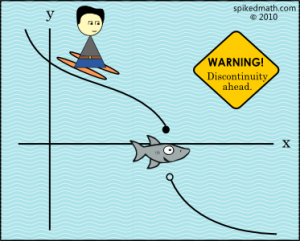 Sometimes I worry that “storytelling” is about to jump the shark.
Sometimes I worry that “storytelling” is about to jump the shark.Because right now, everyone is touting storytelling (stories, stories, stories!). Countless articles and books have told us the benefits of stories. Storytelling as a leadership tactic. Storytelling as a sales tactic. Storytelling to build your tribe. Storytelling to command attention. On one hand, it’s a victory for the storytellers! But it also feels like a potential “uh-oh” moment. A this-isn’t-special-enough-anymore moment.
I’ve noticed, however, that many of the conversations about storytelling are failing to address something pretty important: that your story has to be about something. And that you should really understand what it is you’re about before you try to tell a story about it.
I never would have thought this was a thing to struggle with—until I started working with businesses to tell their stories.
Pass the Soda and Let’s Talk
The people and organizations I’ve worked with fall into one of three positions on the “we get what we’re about” scale.
1.¬† We know exactly what we’re about: just help us say it in this speech, book, web site, video, or other cool project.
2.¬† We have a paper trail, full of statements and formal-sound rhetoric—mostly full of words that the industry demands, but that have very little life or meaning. What we’re about is somewhere close. It’s here in the building somewhere. We just need help getting back to it and saying it in this speech, book, web site, video, other cool project.
3.¬† We have lost our way and really have no idea. But we are going to keep making speeches, books, web sites, videos, and projects that should be cool but aren’t.
Number one is easy, because it’s just execution.
Number three I usually don’t work with—but instead, leave for the coaches and consultants who love the challenge of turning a business around.
But number two is where it’s at. Literally, it’s where I most often find people and organizations. It’s the trickiest place to be, because with all of that rhetoric and industry-conforming jargon (we are saying all of the right stuff!), it’s often quite hard to see that you might have a problem. It takes companies a while to come around to the idea that in this story economy—this economy of connection and person-to-person selling—you might be losing ground if you are no longer talking to people in real ways.
But it’s also a great place to be, because once a company does see it, they are eager to throw themselves into the process.
So, what does it look like when a company starts investigating what they are truly about? The processes I’ve been part of are all remarkably similar, no matter if it’s the American Heart Association or a solopreneur.
It’s not a creative brief that gets passed down the ladder, until it’s 16 people removed from anyone who gets to make a decision. It’s not a memo. In fact, it barely feels official at all—which is sort of the point.
It’s people in a room (the decision-makers and/or the people who have the ear of the decision-makers), with coffee and soda and trail mix, talking about what matters. It’s hashing it out through one-on-one and group conversations. It’s taking the time to answer really, really basic questions. Earlier this year, I was working with one of my clients—a non-conventional auto financing company—having exactly these conversations. They had done the work of the brainstorming and defining who their people were and what they cared about.
But they needed that essence. That one thing they were about that permeated everything else. Through talking it out, we realized that their thing was simply opportunity: we are about opening up opportunity to people. It means making the car buying experience better. It means having people’s backs. It means any number of specific things that they can talk about in more detail. But it all flows from one idea: cracking open opportunity. That’s what the stories they tell in various places (videos, web site, brochures) need to be about at their core. Without that core, they might still tell great stories. But the stories wouldn’t lead clients and potential clients where they needed them to go.
So absolutely tell stories. All of the time and everywhere. Frame your “About Us” page as a story. Start off your presentations and speeches and client pitches with stories. And craft your story into a video.
But make sure every story is rooted in the same basic thing your company is about. Don’t write one more word until you hash that out. Make it your next conversation. Because there’s a Fonzie and a shark around every corner. And only a story about something real will keep you on course.

